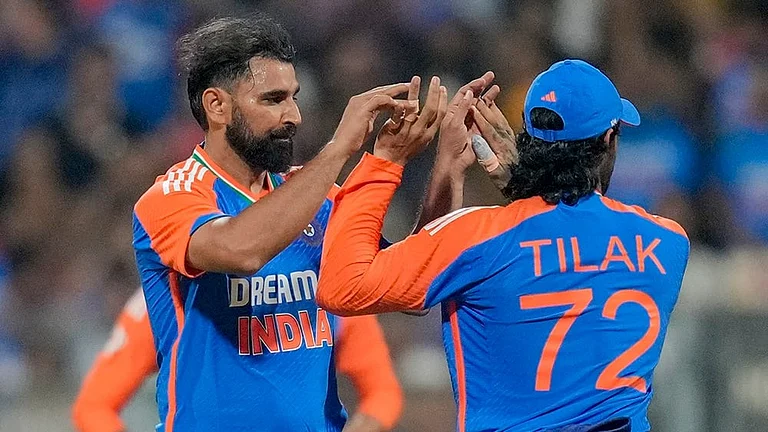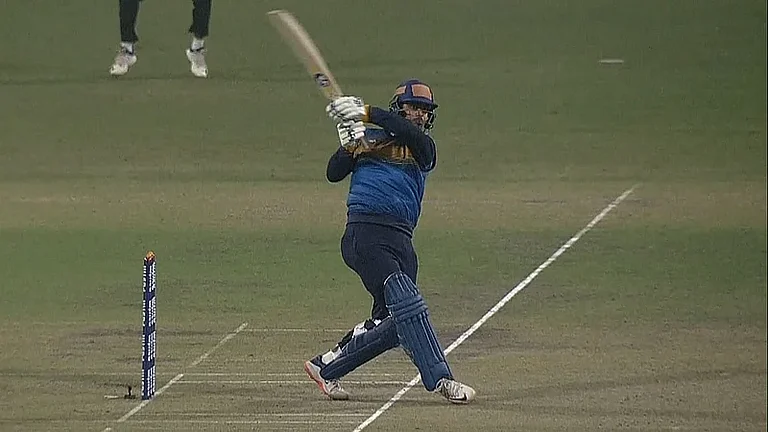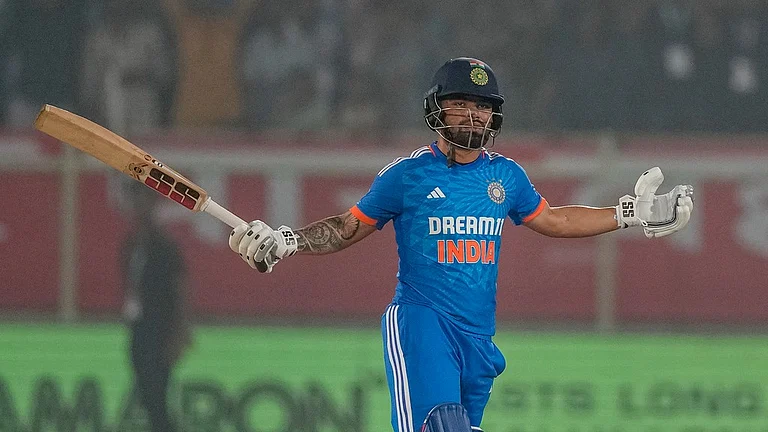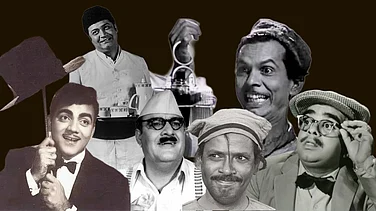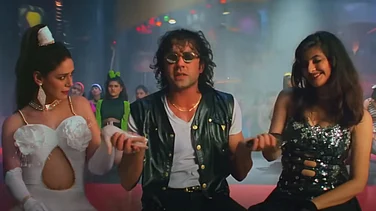From stages and art galleries to digital galleries, artists will always find a way to tell their stories.
The beating of drums of live music concerts, the connection with the audience of stage performance, Covid-19 has killed it all. Everyone’s life has come to a standstill because of the pandemic and the art industry including performance art, theatre, film and TV industry is no different. While projects that were already greenlit before the pandemic managed to complete their shoot, creating COVID-safe bubbles, there were very few new projects that took flight.
Talking about live performances being hit by the pandemic, Rajit Kapur, who was recently seen in SonyLIV’s ‘Rocket Boys’ says, “I am missing the stage a lot. The stage got really affected and I would say not just theatre performance, but any live form of entertainment whether it’s a play or a musical show or a dance performance, everything got badly hit. It’s not just the financial loss that is very apparent and obvious, but it is also a cultural loss because stage performance is also about interacting with the audience. Even with fifty per cent capacity, people are scared of coming to watch live performances. It is sad that all creative interactions are happening through phones and IPads. Theatre going digital is a compromised form of the art. It cannot be the same thing as live performance. Live interaction just cannot be replaced.”
LGBTQ activist, filmmaker and organiser of KASHISH film festival, Sridhar Rangayan says, “We had so many dreams, we were to start so many projects. Everything is on a backburner currently. We were to start production on two new feature films – 'Songs of Eternal Love', an Indo-American love story between an American Jewish professor and an Indian Muslim singer; and also, a sequel to our very successful film Evening Shadows. We were also planning to launch the production of two documentaries – a follow-up to our National Award-winning film 'Breaking Free', and also a documentary on 'Sweekar – The Rainbow Parents', the support group for parents of LGBTQ+ children. Tell me, who will let us in their homes to interview them, when everyone is scared of the virus?”
Rangayan explains that while they lost a sizable number of audiences who would come to the on-ground festival to basically mingle and celebrate the community spirit that is so evident at every KASHISH,they managed to gain new audiences not only across India but across the world. They were thrilled that they could watch the latest LGBTQ+ films sitting in the comforts of their own homes across the seven seas. However, in 2021, the audience numbers dropped because the novelty of online events wore off and everyone wants to now participate in on-ground events again. Also, for many LGBTQ+ audiences staying with their families, accessing such online events publicly is hard, especially if they are not out yet.

The adrenaline rush that one experiences before the first performance of a play is something that theatre artists live for. Though digital performance is an art by itself. It can never replace theatre, just as theatre cannot replace what digital media have to offer. Mahesh Dattani, Indian director, actor, playwright and writer says, “Theatre is the parent of every other form of storytelling. A parent is irreplaceable. As our lives grow more and more disintegrated with isolation, uncertainty, and void of human contact, theatre offers us every aspect of human connection, on the physical plane, the social plane, the cultural plane, and the ideological plane.”
Things are tough not only for the actors, directors, and writers but also for the people who are dependent on theatre for their livelihood. The technicians, light men, sound designers, set designers, play co-ordinators, booking assistants are all struggling because theatres cannot function like before and are opening only with a 50 per cent capacity. Actor Aahana Kumra says, “The pandemic has impacted the livelihoods of the backstage crew and people who heavily depend on theatre for their income. In any case, the theatre has never been a lucrative source of income in India and never could pay all the bills. Artists pursue theatre for passion but when theatre companies were up and running, they were helping to generate income for those whose kitchens run solely with the help of what they earn via theatre.”
Life has become tougher for theatre artists and to run a theatre company without any revenue coming is not easy for Makarand Deshpande, writer, actor and director. He explains, “Initially it was the virus that we were all worried about, but now the economy has taken the front seat and stage plays have come to a halt. There are a lot of uncertainties, we are also not sure if we will be able to afford it or not when the rules are that we can allow only 40 to 50 percent people in the theatres. Sometimes I feel helpless, but you can’t hold anybody responsible for this situation.”
Deshpande feels that there are a lot of limitations to re-start natak in a full-fledged way. He explains “Even if stage plays start, I don’t think people will have the money in their pockets to afford it. It’s an expensive affair for us to run theatres with just 50 per cent audiences and increasing the ticket rates is also not going to work because now nobody has the money to afford it.”
Theatre artist and actor Aahana Kumra says, “The relationship that you build with an audience is incredible and personal. I know people who have been watching their favourite play for over ten years. That connection and bonding you cannot get in a digital medium when you are giving retakes and never fully following your instincts and a vision that is your own. I think theatre is an actor’s medium and it becomes impossible to create that kind of an intimate space on OTT or in cinema for yourself or the audience.”

Stage plays are going through a rough patch, but as it is theatre was never a flourishing job. For the artist, theatre is a passion. Stage artists have always been struggling. Actor Vinay Pathak says, “Raag manch ke bhavishya ki joh baat kaarta hai, hum toh hamesha sehi ghisatthe rahe hai. Lekin hum usi mein aapni kaala banata hai (If we talk about the future of stage plays, stage artists have been always struggling. But we create our craft within all these hardships and within whatever we have). That’s the charm of this medium, you have to get your hand dirty. It’s an art form and it has so many different variables like so many other art forms. And I am sure and hopeful that we will find newer ways to exist and flourish. We will create ways to tell our stories. That’s my faith in the medium.”
It was a struggle with budget as expenses shot up with filmmakers and producers too. Filmmaker and producer Tanuja Chnadra says, “Last year I was in production for my first series for the web. Because of Covid-19, we had soft preparation for quite some time and could manage only two months of proper preparation for the show. With many guidelines in place, we had shot for exactly half of it when the second wave hit and we had to stop our work.”
Chandra narrates, “During the shoot the crew size had increased because there was a team in place to make sure COVID protocol was followed. And budgets obviously went up because there was no room-sharing in outdoor locations and only three people in one vehicle.”
Several major art exhibitions too got cancelled. Reimagining visual art digitally was not an easy task. For multidisciplinary contemporary artist Seema Kohli, the art scene seems to be getting better as compared to what they have seen in the last two years. “It’s much slower, but you do see the people getting ready, waking up to the fact we would be facing these situations more often now. Some of the other viruses will always be around in the new world. People have got used to this way of life. Most of us did get affected either directly or indirectly. I had a few shows lined up which got postponed. I hope to see them happen now, as the situation gets better. As in all other fields, we grow intellectually through travels, communication, human bonding which happens through physical presence. I missed my travels and friends.”

Kholi explains that as artists, most of the work happens in isolation; from the studios, so staying indoors was not forced. But the galleries went through a major setback as they had to face a lot of uncertainty. She adds, “The art market as all other markets moved to the virtual dimension. Many more opportunities opened up. We lost a lot and also learned and earned new possibilities. So, we can say if the pandemic was the worst of times, it was also the best of times. Time for change, professionally and emotionally also. The world changed and we changed as a race, I hope for the better. But we are still struggling.”







